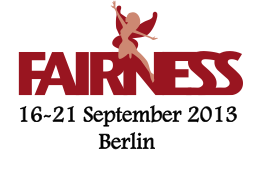Speaker
Dr
Kirill Lapidus
(Excellence Cluster 'Universe' TUM)
Description
HADES is a versatile detector located at GSI Helmholtzzentrum für Schwerionenforschung and currently operating at the SIS18 accelerator in the range of beam kinetic energies of 1-2 GeV/u (for nucleus-nucleus collisions), up to 3.5 GeV in proton-induced reactions. The ultimate goal of the HADES experimental program is to reveal signals of hadron modification expected to occur at non-zero baryonic densities. In this respect, primary objects of interest are light unflavoured vector mesons (rho, omega, phi), accessible via di-electron measurements, and (anti)kaons. The strategy is to perform systematical measurements ranging from elementary reactions to collisions of heavy nuclei.
Study of elementary nucleon-nucleon reactions delivers a basis for the interpretation of proton-nucleus and nucleus-nucleus collisions. Of particular interest here is the role of baryonic resonances in the production of electron-positron pairs and strange particles. Besides, already the vacuum properties of certain particles such as the molecular-like state Lambda(1405) are of interest by themselves. Proton-nucleus reactions (pNb at 3.5 GeV) present a next level of complexity. Here, the behaviour of various mesons created inside a nucleus, including omega’s and neutral kaons, was examined by HADES. A truly heavy colliding system (Au+Au collisions at 1.23 GeV/u) was measured by HADES in 2012 and a number of analyses is on-going with first promising results both in the dilepton and in the strange sector.
In the near future, HADES has a unique opportunity to perform measurements with pion-induced reactions characterized by favourable conditions for an observation of in-medium effects. After completion of the experimental program at SIS18, HADES will move to FAIR and will continue measurements at SIS100 at beam energies of up to 8 GeV/u.
Primary author
Dr
Kirill Lapidus
(Excellence Cluster 'Universe' TUM)

